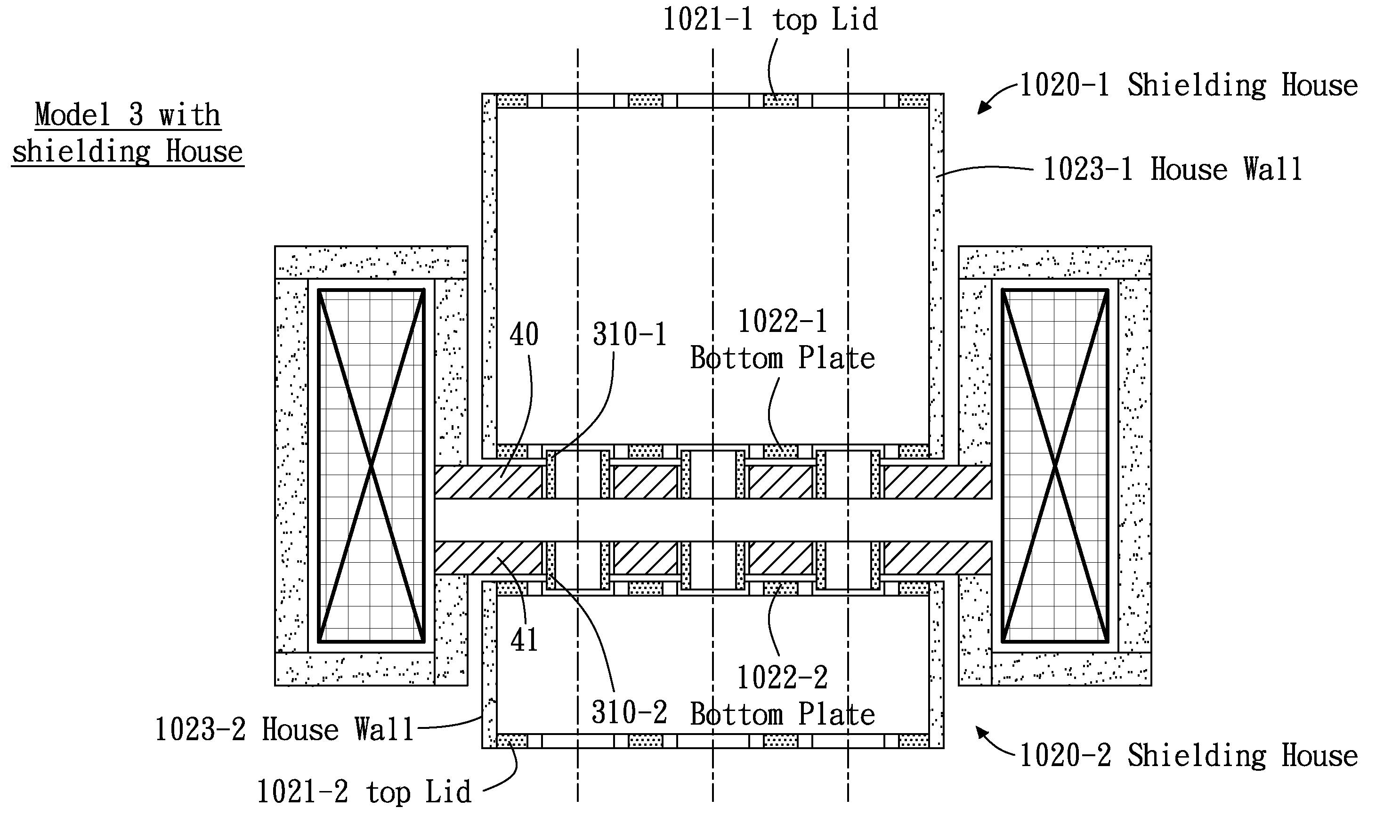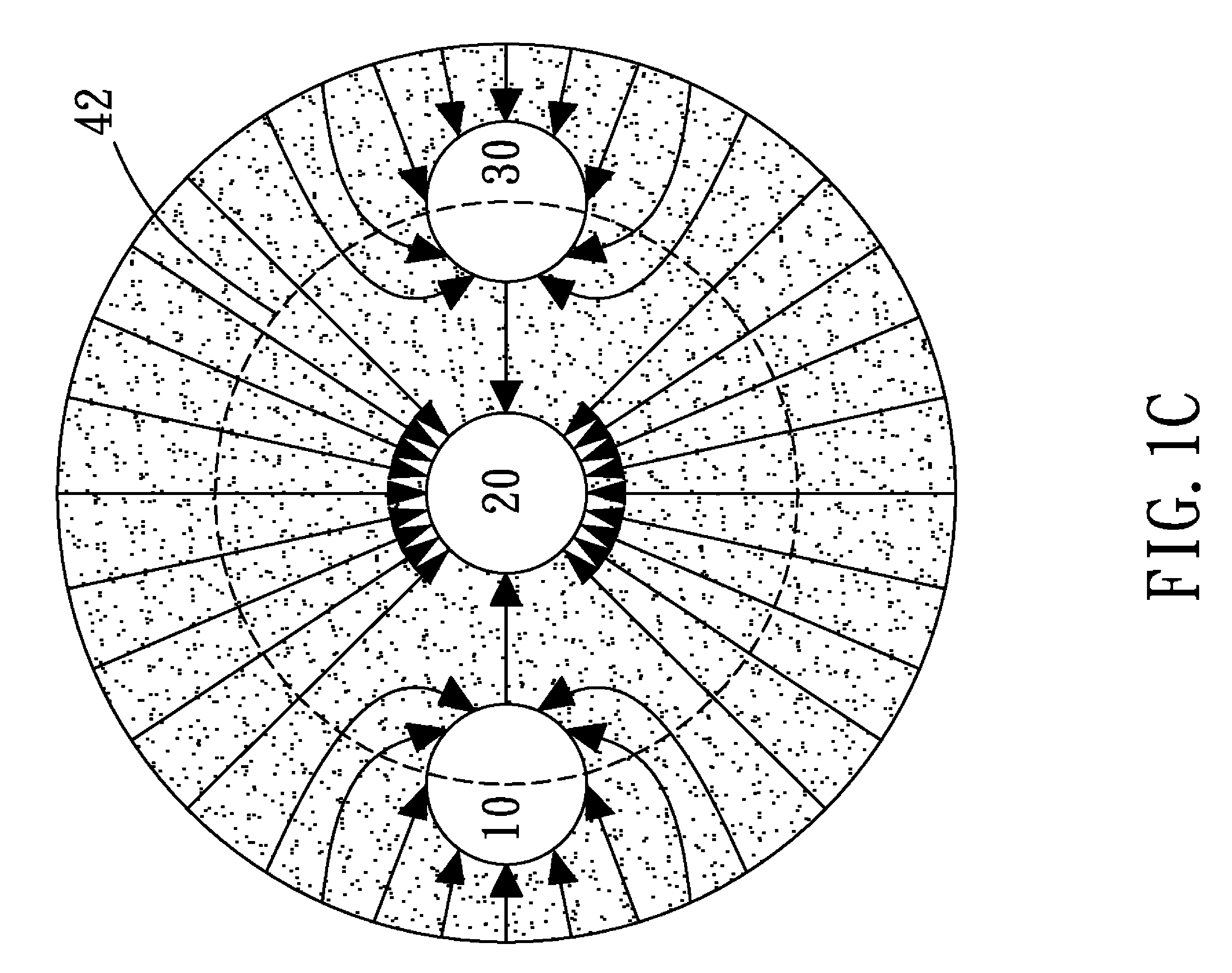Multi-axis magnetic lens
a magnetic lens and charged particle technology, applied in the direction of beam deviation/focusing, magnetic discharge control, instruments, etc., can solve the problems of reducing the high order harmonics of magnetic fields, weakening non-axis, etc., and achieve the effect of a wider range of applicability
- Summary
- Abstract
- Description
- Claims
- Application Information
AI Technical Summary
Benefits of technology
Problems solved by technology
Method used
Image
Examples
first embodiment
the present invention inserts a much higher permeability magnetic insert ring into each hole of each sub-lenses to weaken the non-axisymmetric distribution of magnetic scalar potential in the sub-lens, and as a result reduces high order harmonics of the transverse magnetic field. The structure of this embodiment is illustrated in FIG. 3A and called as Model 2. A magnetic conductor ring 310 is inserted in hole 8, in the upper plate 40 and its permeability is much higher than that of the magnetic conductor plates 40. For example the permeability of the magnetic insert ring is 100,000 versus the permeability of the magnetic conductor plate of 5,000. In this embodiment, the magnetic insert rings 310 inserted in the upper and lower magnetic conductor plates function as a pair of pole pieces of the sub-lens. A simulation result of the dipole field distribution on the optical axis 35 of the sub-lens 30 is illustrated in FIG. 3B, wherein permeability of plates 40, 41 is 5000, coil york 230 ...
second embodiment
the present invention inserts a much higher permeability magnetic insert ring and a non-magnetic material gap into each hole of each sub-lens. The magnetic insert ring is aligned with the hole. The structure of this embodiment is illustrated in FIG. 4A and called as Model 3. A non-magnetic material gap 420 is introduced between the inner sidewall of hole 8 and the outer sidewall of the magnetic insert ring 310. For example, the non-magnetic gap 420 is a gap of vacuum, or filled with a ring of non-magnetic material such as aluminum, copper, and ceramics. A simulation result of the dipole field distribution on the optical axis 35 of the sub-lens 30 is illustrated in FIG. 4B, wherein permeability of plates 40, 41 is 5000, coil york 230 is 1000, and magnetic insert ring 310 is lowered to 5000. Introducing a non-magnetic material gap 420 effectively reduces the dipole field between R1 and R4. The permeability of the magnetic insert ring 310 needs not be very high, for example 5000 instea...
third embodiment
the present invention is illustrated in FIG. 5A. Two stack magnetic shielding tubes 530, respectively called as 530-1 and 530-2, are introduced to the system. This design is for removing the magnetic field in the area above the upper magnetic conductor plate 40 and below the lower magnetic conductor plate 41. Each magnetic shielding tube 530 with an inner diameter equal or larger than the non-magnetic material gap 420 is separated from the magnetic conductor plate 40, 41 by a non-magnetic lining 520 and aligned with the corresponding magnetic insert ring 310. Four more markers are added to the drawing. T1 and T2 respectively correspond to the position inside and at the bottom end of the magnetic shielding tube 530-1 located above the upper magnetic conductor plates 40. T3 and T4 respectively correspond to the positions at the top end of and inside the magnetic shielding tube 530-2 located below the lower magnetic conductor plate 41. A simulation result of the dipole field distributi...
PUM
 Login to View More
Login to View More Abstract
Description
Claims
Application Information
 Login to View More
Login to View More - R&D
- Intellectual Property
- Life Sciences
- Materials
- Tech Scout
- Unparalleled Data Quality
- Higher Quality Content
- 60% Fewer Hallucinations
Browse by: Latest US Patents, China's latest patents, Technical Efficacy Thesaurus, Application Domain, Technology Topic, Popular Technical Reports.
© 2025 PatSnap. All rights reserved.Legal|Privacy policy|Modern Slavery Act Transparency Statement|Sitemap|About US| Contact US: help@patsnap.com



